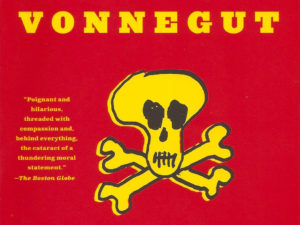
Radar is committed to all forms of art and entertainment and as such, will pick one book as a reading recommendation every week. This week, Radar’s “Lit” pick is “Slaughterhouse-Five, or The Children’s Crusade: A Duty-Dance of Death” by Kurt Vonnegut.
Humankind has an affinity for war which, as depressing and disappointing as it may be, we must all learn to accept. The arts often address this burden, questioning it, even attempting to circumvent it, but few works have tackled the subject better than Kurt Vonnegut’s “Slaughterhouse-Five.” Often considered one of the greatest anti-war books published in English, Vonnegut’s seminal masterpiece contains a narrative that is better experienced than reiterated, one which betrays logic and literary structure to better convey its plethora of themes.
“Slaughterhouse-Five” takes inspiration from the bombing of Dresden, Germany during the height of World War II in 1945, an event which Vonnegut himself survived. The novel’s protagonist and unreliable narrator, one Billy Pilgrim, recounts his life story leading up to and after the bombing, taking readers on a wholly odd experience defined by post-traumatic stress and an incredible gamut of emotions; often hilarious but mostly cripplingly depressing when fully absorbed, “Slaughterhouse-Five” is mandatory fiction that tackles one of humanity’s most powerful afflictions.








